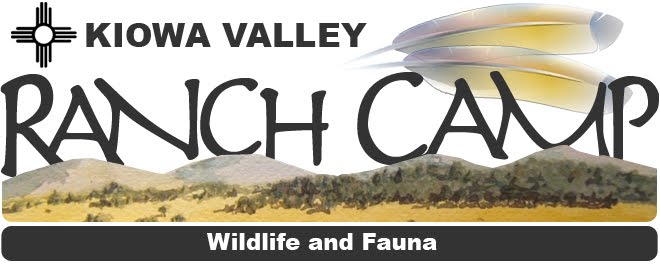
 Kiowa Valley lies within a transition zone, from the high elevations of the Rocky Mountains to the sweeping grasslands of the Great Plains. The prevailing wind direction in this region is westerly; therefore once precipitation reaches the grasslands, there is generally only enough water to support short- (less than 2 feet, or 0.6 am) and midsize (2-4 feet, or 0.6-0.8 am) grasses. However, as the winds travel toward Capulin, they pick up more moisture and as a result deliver enough precipitation to support a few tall grass (over 5 feet, or 1.5 am) species.
Kiowa Valley lies within a transition zone, from the high elevations of the Rocky Mountains to the sweeping grasslands of the Great Plains. The prevailing wind direction in this region is westerly; therefore once precipitation reaches the grasslands, there is generally only enough water to support short- (less than 2 feet, or 0.6 am) and midsize (2-4 feet, or 0.6-0.8 am) grasses. However, as the winds travel toward Capulin, they pick up more moisture and as a result deliver enough precipitation to support a few tall grass (over 5 feet, or 1.5 am) species.Prairie
Within the monument, shortgrass prairie is dominant, with medium-sized grasses, and the three main species of tall grasses; Big Bluestem, Indiangrass, and Switchgrass,also being present. Blue grama and Sideoats grama are two dominant grasses that thrive in the monument.

Desert plants, such as cacti and yuccas, also live on the short-grass prairie within the monument.
Abundant wildflowers, such as Prickly Poppy, Indian Paintbrush, Sunflowers, and Beardlip Penstemon
The high plains of northeastern New Mexico, including Kiowa Valley, are where shortgrass prairie and mountain forest meet. This transition between two ecosystems provides habitat for many different plants and animals.

Large mammals such as deer and antelope roam the plains. The combination of grassland and forest provides habitat for upland and woodland songbirds. Insects swarm at the high elevations and reptiles find homes in the rocky crevices.
Warm air rising from the plains around the volcano provide thermals for many soaring birds. Turkey Vultures return to the mountain each spring. Ravens, Red-tailed and Ferruginous Hawks play throughout the year and Northern Harriers are common over the plains all winter.
Prairie grasslands provide habitat for upland birds such as meadowlarks, roadrunners, and sparrows. The pinyon/juniper woodlands are home to jays, towhees, and woodpeckers.
RANCH CAMP LLC - Copyright 2008 - All Rights Reserved







